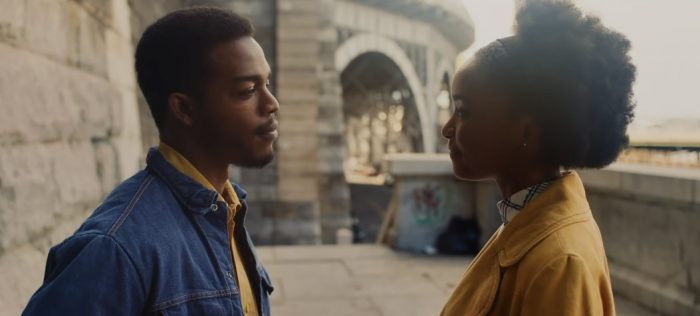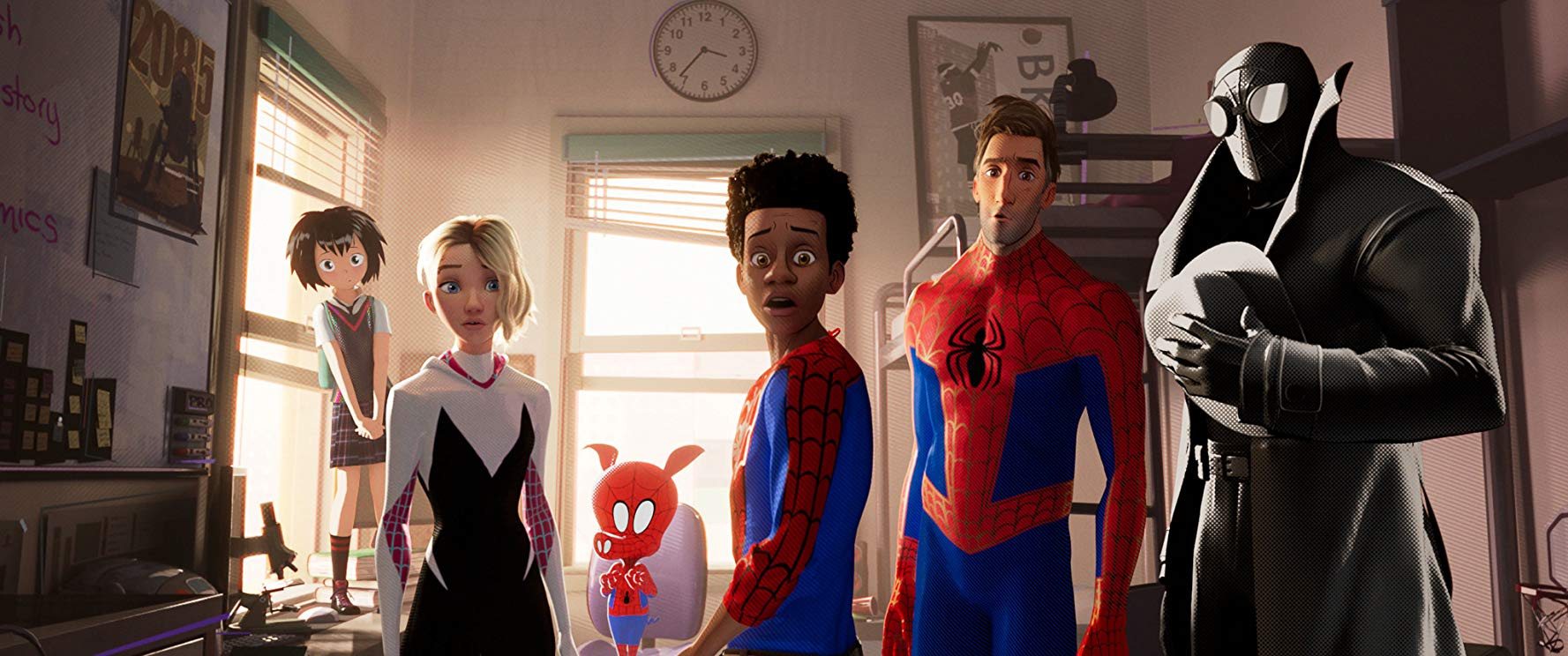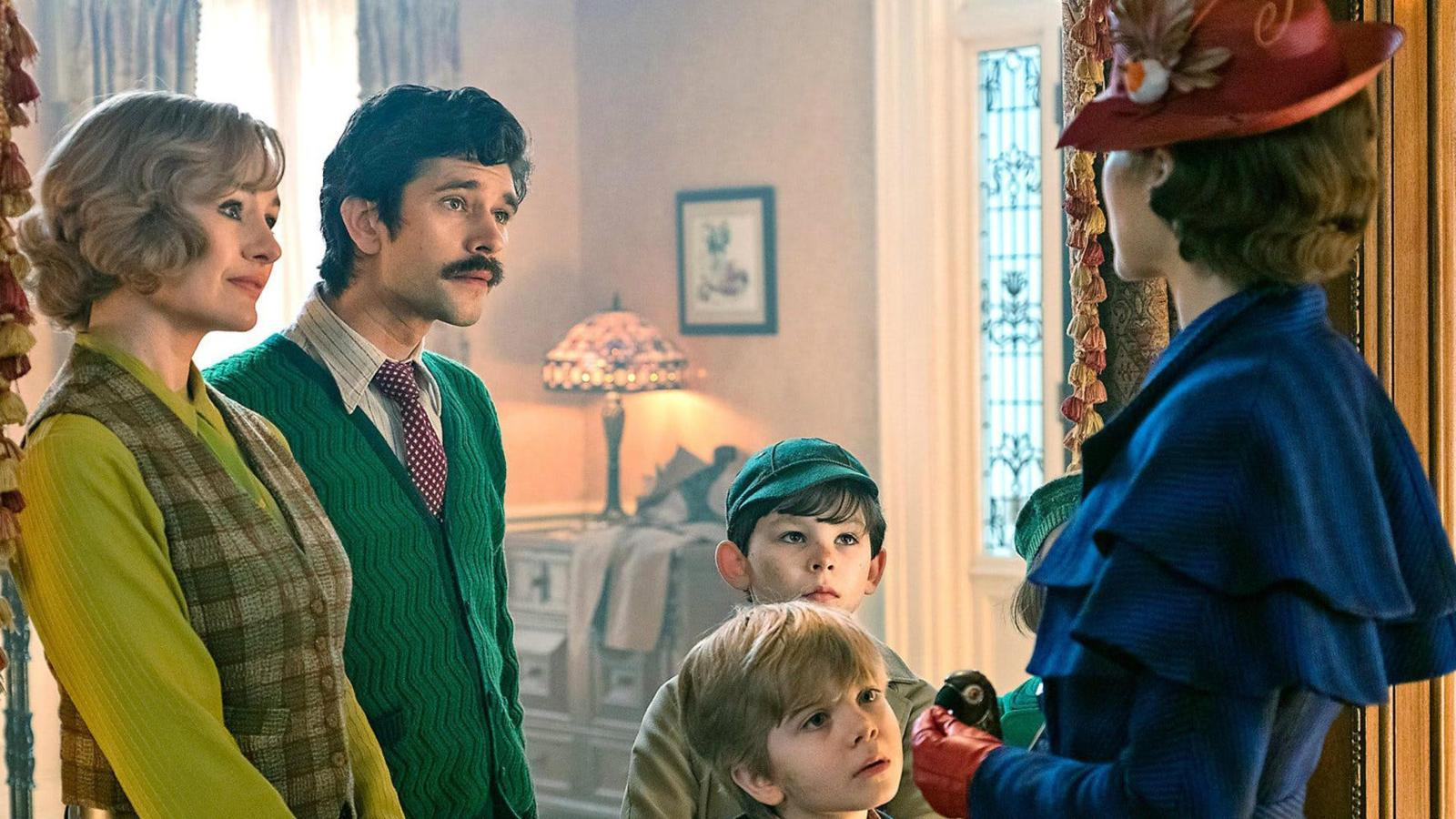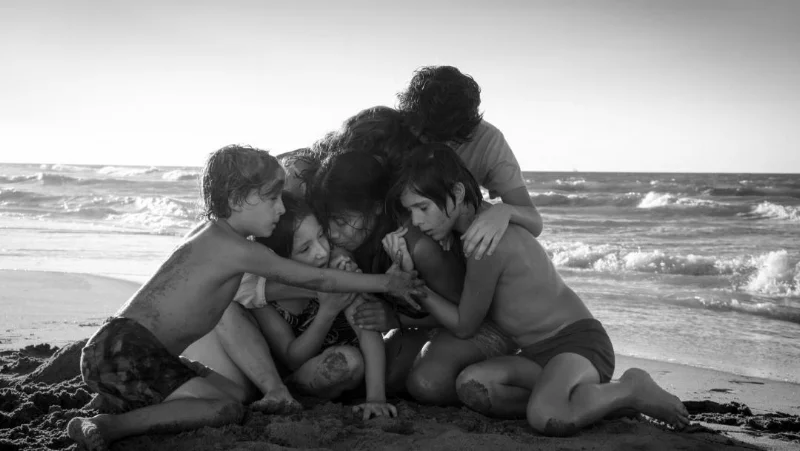Below are the ten most satisfying and memorable films I saw in 2018:
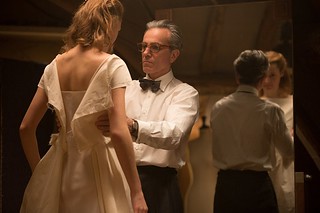 11. Phantom Thread A-
11. Phantom Thread A-
Okay, okay, this year I'm doing something new and actually listing the
eleven most satisfying and memorable films I saw in 2018. I include
Phantom Thread here because it
should have been included in my 2017 top 10 but, frustratingly, was not released until January. So, to compromise when it comes to listing strictly 2018 movies, I sort of include this one as "honorable mention." Because this treatise on the relationship between a devoted young woman (Vicky Krieps), her self-absorbed fashion designer lover (Daniel Day-Lewis), and his longtime business partner/sister (Lesley Manville) was so esquisite, I went to see it twice.
What I said then:
This movie takes its time at it, but it goes in unexpected directions that are subtly disturbing. And if a movie must be disturbing, subtle is perhaps the best way to go. It makes a movie richer with repeat viewings, and I will certainly be watching this one again.
 10. We the Animals A-
10. We the Animals A-
Presented with the dreamlike haze and fractured structure of memory,
We the Animals is a portrait of three young brothers with parents more concerned about their own problems than the welfare of their children -- and it builds up to a rather unexpected reveal regrding one of the boys. It's that turn that elevats this film to greatness, but every shot has a succinct contribution to the whole, the story arc finely threaded with what only seemed to be unrelated vingettes. It's difficult to describe a unique theatrical experience when it is truly unlike any other, but suffice it to say that anyone with a sensitivity to the awakenings of puberty is likely to be moved.
What I said then:
This is
fiction -- and increasingly stylized as the story unfolds. This is not a straightforward depiction of reality. This is art. And it is by turns charming, sad, and beautiful. Sometimes shocking. I
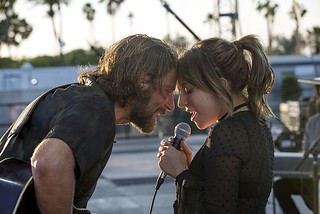 9. A Star Is Born A-
9. A Star Is Born A-
It's not often that a movie comes along that exceeds expectations at every level: Bradley Cooper's achievement as a director; his revelatory performance as an alcholic fading rock star; his ability as a singer; Lady Gaga's ability as a serious actor; even this movie's knowing acknowledgment of its previous iterations' legacy as vehicles for gay icons.
A Star Is Born is a story now decades old, nearly a century in fact, and still this version of it updated its sensibilities so effectively that, even though at its heart it's a simple love story just like countles others, it made me feel seen and understood. I felt a personal connection to this movie that I did not expect, with so much empathy and understanding at its heart.
What I said then:
The things that are great about A Star Is Born are just so
great — it makes for a genuine crowd pleaser which, beat for beat, hits all the right notes. You could even call this film subtly subversive. What’s not to love about a flawed man who makes terrible mistakes but through it all has eyes only for this one wide-eyed woman, who in turn progressively overcomes a lack of confidence and ambition to showcase awesome talent? A story almost pointedly lacking in sexism, and featuring a seamlessly organic sensibility of inclusion? Which even treats alcoholism and addiction realistically as a disease to be treated without judgment?
 8. Science Fair A-
8. Science Fair A-
If you want to see a movie packed wall to wall with unbridled joy, keep a look out for this one. A documentary about a worldwide science fair? Indeed! Seeing these kids from all over the globe giddy at the chance to showcase how they will change the world is both inspiring and inectious, and provides a truly welcome beacon of hope in an otherwise dark world. This movie is overflowing with charm, a delightfully ironic wave of movie magic that happens to be about science.
What I said then:
I found Science Fair
to be deeply, deeply affecting — in a profoundly positive way. How often does a documentary make you cry tears of joy?
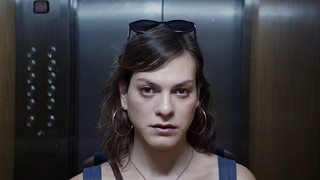 7. A Fantastic Woman A-
7. A Fantastic Woman A-
Attention to all those who lament the dearth of trans actors playing the trans roles that tell their stories: look no further than
A Fantastic Woman, a delicately executed Chilean film about a young trans woman facing the vicious prejudices of the older man she's in a relationship with after he dies unexpectedly, as well as the broader prejduices of her culture. It's a sad story, true, but nowhere near as sad as it could have been, and the performance of the lead actor, Daniela Vega, is indeed fantastic.
What I said then:
While Marina endures emotional traumas one after another ... she moves through this story as a paragon of resilience and strength -- and without contrivance. She occasionally makes ill-advised choices, but never fatal ones, and stays a course that runs between resolve and defiance. Even in the midst of a life turned upside down by a random, tragic event, of all the people in this movie, Marina emerges as the hero.
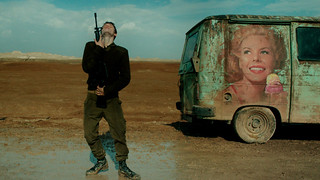 6. Foxtrot A-
6. Foxtrot A-
A beautiful Israeli meditation on grief in three acts, the first and third focused on one of two grieving parents, the second on the son killed senselessly while stationed at a Palestinian checkpoint. When dancing the foxtrot, you always end up right where you started: so it goes with these characters, in a uniquely stylized, provocative and contemplative film.
What I said then:
There's a sort of elusive perfection to this movie, a clear precision, a unique finesse, without spelling out exactly what [director] Samuel Maoz is trying to say. Certainly plenty of Israelis feel they understand it, as this movie has proved controversial in its country of origin. That's hardly surprising. For the rest of us, further removed from those cultural biases, it's easier to take Foxtrot as a beautifully artistic portrait of familial grief, and how perception can radically alter meaning.
 5. Can You Ever Forgive Me? A-
5. Can You Ever Forgive Me? A-
Melissa McCarthy gives the best performance in the best movie of her career, starring opposite the wonderful Richard E. Grant as two embittered and aging gay best friends who conspire to make money by forging letters by literary giants. Oh and did I mention this is based on the true story of Lee Israel, who did exactlty that?
Can You Ever Forgive Me? is dramedy at its finest, the kind of untold story one loves to discover, told with both gravitas and deliciously dark humor.
What I said then: Can You Ever Forgive Me?
presents its audience with characters who range from abrasive to literally criminal, yet are unavoidably compelling, even fun. It shows them doing terrible things and refuses to pass judgment — it leaves that up to the viewer. The script has wit to match that of Lee Israel herself, and is given depth by on-location shoots in places such as the real-life Manhattan bar Israel actually spent a lot of time at in the early nineties, or the many New York book stores she visits.
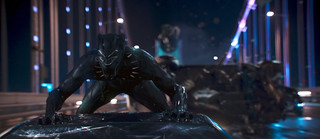 6. Black Panther A-
6. Black Panther A-
I would hesitate to call
Black Panther the best superhero over made, but it comes close -- and I would not begrudge anyone else making such a claim. This is the one movie this year that I saw three times in the theatre, after all, and I have not done that with a superhero movie since the 1992 release of the only truly perfect superhero movie ever made,
Batman Returns. One could even make the case that
Batman Returns was similarly progressive, at least in how it treats and presents its female characters. It's 26 years later now, though; one cannot argue the fact that
Batman Returns is exceedingly white; and in spite of a male protagonist and male villain,
Black Panther's many surprises and delights include its unparalleled feminist sensibilties. This is not just another Marvel Comics movie aimed at little more than cashing in; this is a film with real depth, a heft to the historical context of its proceedings, both onscreen and in the real world. The cultural impact, and specifically the positive cultural impact, of this movie cannot be overstated.
What I said then:
This is perhaps what impresses me most about Black Panther
: even in a movie packed with action, a movie still recognizable as a comic book adaptation, none of it is contrived -- that being the key difference from nearly every other superhero movie of the past decade. It characters of royal blood and themes of family rivalry are almost Shakespearean. It deals with succession to the throne and ritual battles, all with production and costume design with fantastically authentic African influences. The hero just happens to be a man who suits up in an alien technology-enhanced panther costume.
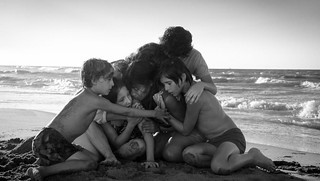 3. Roma A-
3. Roma A-
Here is an "art movie" that is truly a work of art: a stunning visual feast in every frame, every scene based on actual memories of director Alfonso Cuarón growing up with a maid in the Mexico City neighborhood after which this film is named. Cuarón is well known for stunning technical cinematic achievements, and even though they are far more subtle here,
Roma is still no exception. This movie is short on action and perhaps not for those with particularly short attention spans. But there are rich rewards for losing yourself in this movie, and giving attention to its depth of detail.
What I said then:
All this is to say Roma
can catch you off guard, provided you have the patience for the time it takes. It seeps into you slowly, its roots slowly digging into your soul. It somehow justifies itself after the fact, well after the credits have rolled, as it slowly dawns on you how much better it is than it seemed in the midst of it.
 2. Blindspotting A
2. Blindspotting A
This story about best friends Collin and Miles, a black guy struggling to make good and a white guy who gets away with far more than his friend ever could, is a lot more entertaining than it sounds. For some viewers, it's even a bit much -- I found it to be nearly perfect. The story, after Collin witnesses the police shooting of an unarmed black man, is propulsive. It even provides a fair amount of humor, perhaps to catch the viewer off guart with some cultural unpleasantness we should all be forced to face. There's no way to do this movie justice without simply insisting it must be seen.
What I said then: Blindspotting
is beautifully specific, in both its sense of a place in transition, and of a culture in crisis. Rafael Casal is excellent as Miles, the best friend who is slow to realize what he really gets away with compared to most of the people in the local culture he both emulates and is a product of. He's just as much to blame for the crime that landed Collin in custody, but guess which one of them had to serve any time?
 1. Eighth Grade A
1. Eighth Grade A
I have been singing this movie's praises for months -- since its release in July, in fact -- and I won't stop now! I knew then it was the best movie I had seen thus far this year, but given its "small indie movie" status and sensibility, it did not occur to me until later that perhaps it would indeed be the best film of 2018 in the end. Well, it is! Its many moments of painful awkwardness are a big part of what make it so great: movies never get made about this specific period in a person's life, and yet movies are never this universally relatable. Elsie Fisher gives a superb, knowing performance in the lead role as a middle school girl with a single dad, just trying to manifest some kind of self-actualization in the fact of crushing self-doubt. And it's her performance, as well as every one else's in this movie, that makes the story so tender, funny and moving. We don't know if she will be okay as she moves on in life, but we are reassured that she just
might be, and that is exactly what we need.
What I said then:
Even though Eighth Grade is relentlessly awkward, it pulls off a rare magic trick in that every scene is also either a delight, a tightrope of tension, or an emotional gut punch. For the great many people poised to relate to this movie in a way they perhaps never have to any other, rooting for Kayla feels like rooting for one's former self.
Five Worst -- or the worst of those I saw
 5. Ready Player One C+
5. Ready Player One C+
This movie admittedly has its moments, but to call it gimmicky might be the understatement of the year. It's a transparent money grab trafficking in a kind of nostalgia that will itself be dated far sooner than it's presented to be in this supposedly futuristic dystopian world.
Ready Player One does have some great action sequences, but that alone does not a great movie make.
What I said then:
It still could have stood some substance to call its own, instead of borrowing it from countless other properties and weakening it to nothing of consequence in the process.
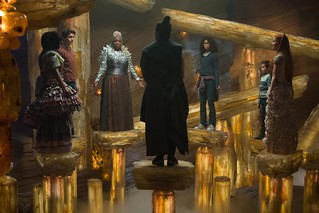 4. A Wrinkle In Time C+
4. A Wrinkle In Time C+
This one might win the 2018 Award for Biggest Failure at Living Up to the Hype. In the midst of all the mesmerizing special effects, substance itself proves persistently elusive. I never read the book, so maybe that makes a difference? Based on the movie alone, I struggle to come up with any real reason for its existence.
What I said then:
I'd say that A Wrinkle in Time
had great potential that it failed to realize, except I can't even figure out what its potential was. I left the movie just wondering what was the point.
 3. Final Portrait C+
3. Final Portrait C+
If I didn't quite find this movie boring, it could still be called . . . tedious. This is a rare film with
a decent critical response that I could just not muster a lot of enthusiasm for -- and neither could I imagine any single person I know having any genuine interest in it. It's about an eccentric painter dragging out the process of painting a portrait for an admiring friend, and in doing so the movie drags as well.
What I said then:
Are you fond of Armie Hammer? Geoffrey Rush? Swiss Italian artist Alberto Giacometti? Still portraits? Well, then Final Portrait
might still not be the movie for you! It might be if you enjoy watching people stare off into space though.
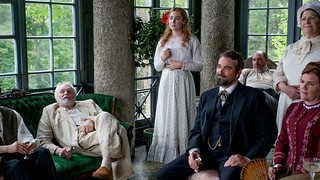 2. The Seagull C+
2. The Seagull C+
If re-reading my original review of a movie still doesn't quite ring a bell, maybe that makes it by definition completely forgettable?
What I said then:
Tepid may be the best word for it. Not exactly a ringing endorsement.
 1. Suspirira C+
1. Suspirira C+
This movie could have been . . . something. Anything! I would have settled on coherent. I'm not sure on what level a horror movie that is never especially frightening quite works. There is at least one scene that is effectively horriying, but it sits in the middle of this incomprehensible and overlong movie about witches running a ballet school, without much in the way of other horror strands tethered to it. Then it ends with a ritualistic bloodbath that is excesive by every measure, to the point of bewildering desensitization. In the plus column, it does have one pretty great dance sequence.
What I said then:
Some say this movie exists in a theoretical region where any viewer can ascribe any label they like to it, and perhaps that is true. So I’ll take my own stab at it: this is a movie with literally nothing to say.
Complete 2018 film log:
1. 1/4
The Greatest Showman C+
2. 1/6
I, Tonya A- (
2nd viewing)
3. 1/7
The Post B+
4. 1/11
Phantom Thread A-
5. 1/19
Hostiles B+
6. 1/28
Phantom Thread A- (
2nd viewing)
7. 2/1
The Commuter B
8. 2/10
Oscar Nominated Shorts: Live Action B+
9. 2/12
Oscar Nominated Shorts: Animated B+
10. 2/16
Black Panther A-
11. 2/17
Shadow of a Doubt *
12. 2/18
Black Panther A- (
2nd viewing)
13. 2/20
Early Man B-
14. 2/24
Game Night B+
15. 2/25
A Fantastic Woman A-
16. 2/27
Faces Places B+
17. 3/2
The Party B
18. 3/5
Annihilation B
19. 3/11
A Wrinkle in Time C+
20. 3/15
The Death of Stalin B
21. 3/18
Love, Simon B+
22. 3/19
Oh Lucy! B
23. 3/21
Loveless B
24. 3/24
Black Panther A- (
3rd viewing)
25. 3/25
Thoroughbreds B+
26. 3/30
Ready Player One C+
27. 4/4
Goldstone B
28. 4/7
🐓 Blockers B+
29. 4/9
Outside In B+
30. 4/10
Foxtrot A-
31. 4/16
Lean on Pete B+
32. 4/23
You Were Never Really Here B+
33. 4/24
Final Portrait C+
34. 5/7
Tully B
35. 5/9
The Endless B
36. 5/12
RBG B
37. 5/15
I Feel Pretty B
38. 5/17
Book Club B
34. 5/19
Tully B (
2nd viewing)
35. 5/22
Three Identical Strangers A- ***
36. 5/24
Solo: A Star Wars Story B
37. 5/26
Live, Gilda B ***
38. 5/27
Won't You Be My Neighbor? A- ***
39. 5/28
Disobedience B+
40. 5/29
The Most Dangerous Year B+ ***
41. 5/30
Prospect B+ ***
42. 6/1
Leave No Trace B+ ***
43. 6/2
Catwalk: Tales From the Cat Show Circuit B ***
44. 6/4
First Reformed C+
45. 6/6
Sadie B- ***
46. 6/8
Ocean's Eight B
47. 6/17
Incredibles 2 B+
48. 6/19
American Animals B+
49. 6/20
Tag B
50. 6/25
Jurrasic World: Fallen Kingdom B
51. 6/27
The Seagull C+
52. 7/1
Sicario: Day of the Soldado B
53. 7/7
Whitney B+
54. 7/10
The Last Suit B-
55. 7/13
Skyscraper C+
56. 7/16
Sorry to Bother You B-
57. 7/20
Eighth Grade A
58. 7/23
The Cakemaker B+
59. 7/28
Mission: Impossible - Fallout B+
60. 7/30
Blingdspotting A
61. 8/2
Don't Worry, He Won't Get Far on Foot B+
62. 8/7
Christopher Robin B
63. 8/9
BlacKkKlansman B+
64. 8/13
The Miseducation of Cameron Post B+
65. 8/15
Crazy Rich Asians B
66. 8/21
Puzzle B
67. 8/24
BlacKkKlansman B+ (
2nd viewing)
68. 8/29
Operation Finale B
69. 9/2
The Happytime Murders C+
70. 9/5
The Little Stranger B
71. 9/7
The Wife B
72. 9/8
We the Animals A-
73. 9/14
Pick of the Litter B+
74. 9/18
A Simple Favor B
75. 9/20
Fahrenheit 11/9 B+
76. 9/23
The House with a Clock in Its Walls B-
77. 9/24
Assassination Nation B+
78. 9/25
Lizzie B
79. 10/1
Science Fair A-
80. 10/3
A Star Is Born A-
81. 10/5
Colette B+
82. 10/8
The Sisters Brothers B+
83. 10/10
A Girl Walks Home Alone at Night B (
2nd viewing)
84. 10/12
A Star Is Born A- (
2nd viewing)
85. 10/13
First Man B+
86. 10/15
Bad Times at the El Royale B
87. 10/16
The Hate U Give B+
88. 10/22
Beautiful Boy B-
89. 10/24
The Old Man & the Gun B
90. 10/28
Free Solo
B
91. 11/2
Suspiria C+
92. 11/4
Bohemian Rhapsody C+
93. 11/6
Wildlife B
94. 11/9
Can You Ever Forgive Me? A-
95. 11/12
Boy, Erased B-
96. 11/18
Fantastic Beasts: The Crimes of Grindelwald B
97. 11/19
Instant Family C+
98. 11/21
The Front Runner B-
99. 11/25
Widows B+
100. 11/27
Ralph Breaks the Internet B+
101. 12/2
Maria by Callas B-
102. 12/5
The Favourite B+
103. 12/6
Roma A-
104. 12/8
Schindler's List A- *
105. 12/11
Anna and the Apocalypse B-
106. 12/17
Mary Poppins Returns B
107. 12/20
On the Basis of Sex B+
108. 12/21
Spider-Man Into the Spider-Verse A-
109. 12/27
If Beale Street Could Talk B+
110. 12/30
Vice B
*Re-issue (no review)
**Advance screening
***SIFF festival screening
[posted 9:49 am]



 11. Phantom Thread A-
11. Phantom Thread A-
 10. We the Animals A-
10. We the Animals A-
 9. A Star Is Born A-
9. A Star Is Born A-
 8. Science Fair A-
8. Science Fair A-
 7. A Fantastic Woman A-
7. A Fantastic Woman A-
 6. Foxtrot A-
6. Foxtrot A-
 5. Can You Ever Forgive Me? A-
5. Can You Ever Forgive Me? A-
 6. Black Panther A-
6. Black Panther A-
 3. Roma A-
3. Roma A-
 2. Blindspotting A
2. Blindspotting A
 1. Eighth Grade A
1. Eighth Grade A
 5. Ready Player One C+
5. Ready Player One C+
 4. A Wrinkle In Time C+
4. A Wrinkle In Time C+
 3. Final Portrait C+
3. Final Portrait C+
 2. The Seagull C+
2. The Seagull C+
 1. Suspirira C+
1. Suspirira C+
